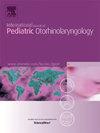上气道手术中的气溶胶缓解。
IF 1.2
4区 医学
Q3 OTORHINOLARYNGOLOGY
International journal of pediatric otorhinolaryngology
Pub Date : 2024-11-01
DOI:10.1016/j.ijporl.2024.112153
引用次数: 0
摘要
背景:产生气溶胶的手术有传播 SARS-CoV-2 的风险,在耳鼻喉科手术中占很大比例。目前还没有减轻这种危害的最佳方法。本研究探讨了减少手术室手术气溶胶的方法:方法:利用插管人体模型(Nasco Healthcare)和粒子计数器(Sensirion SPS30),测量了一系列电灼诱发的气溶胶,其中含有直径为 0.5-10 μm 的粒子。测试了三种不同的缓解策略:口内(Yankauer、吸入式博维笔(SBP))、口外(排烟系统(SES))以及它们的组合:结果:与对照组相比,SES 是有效的,但不如口内缓解策略(p 结论:建议使用口内吸痰技术:建议使用口内抽吸技术缓解烟雾。单独使用口外 SES 不足以缓解气溶胶,与口内吸引技术一起使用可能会适得其反。要确定术中手术气溶胶的最佳缓解策略,还需要进一步的研究。本文章由计算机程序翻译,如有差异,请以英文原文为准。
Aerosol mitigation in upper airway surgery
Background
Aerosol generating procedures pose a risk for SARS-CoV-2 transmission, and comprise a large percentage of cases performed in otolaryngology. An optimal method to mitigate this hazard does not currently exist. This study examined methods to mitigate surgical aerosols from the operating room.
Methods
Utilizing an intubation manikin (Nasco Healthcare) and particle counter (Sensirion SPS30), a series of electrocautery-induced aerosols containing particles 0.5–10 μm in diameter were measured. Three different mitigation strategies were tested: intraoral (Yankauer, suction Bovie pencil (SBP)), extraoral (smoke evacuator system (SES)), and their combinations.
Results
SES was effective compared to controls, but inferior to intraoral mitigation strategies (p < 0.0001). Combining SES with any intraoral mitigation strategy did not enhance mitigation efficiency, and in some comparisons led to inferior performance (SBP vs SBP-SES, p < 0.05). Comparison of intraoral mitigation strategies found no statistically significant differences between techniques, although SBP was found to have the lowest overall level of particles.
Conclusions
Intraoral suction techniques are recommended for aerosol mitigation. Extraoral SES use alone is insufficient for aerosol mitigation, and may be counterproductive when used with intraoral suction techniques. Further research is needed to determine the optimal mitigation strategy for intraoperative surgical aerosols.
求助全文
通过发布文献求助,成功后即可免费获取论文全文。
去求助
来源期刊
CiteScore
3.20
自引率
6.70%
发文量
276
审稿时长
62 days
期刊介绍:
The purpose of the International Journal of Pediatric Otorhinolaryngology is to concentrate and disseminate information concerning prevention, cure and care of otorhinolaryngological disorders in infants and children due to developmental, degenerative, infectious, neoplastic, traumatic, social, psychiatric and economic causes. The Journal provides a medium for clinical and basic contributions in all of the areas of pediatric otorhinolaryngology. This includes medical and surgical otology, bronchoesophagology, laryngology, rhinology, diseases of the head and neck, and disorders of communication, including voice, speech and language disorders.

 求助内容:
求助内容: 应助结果提醒方式:
应助结果提醒方式:


